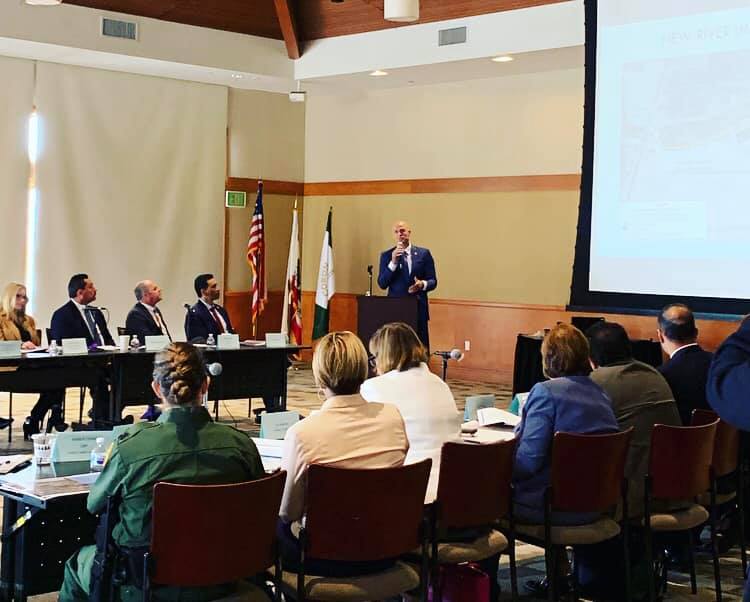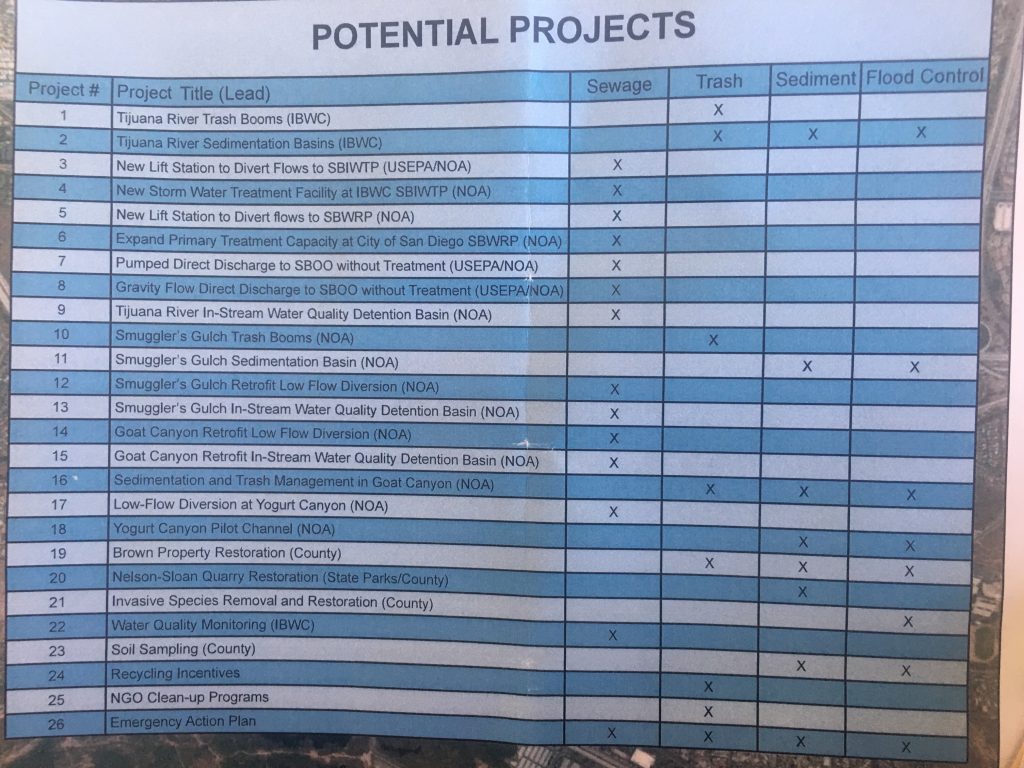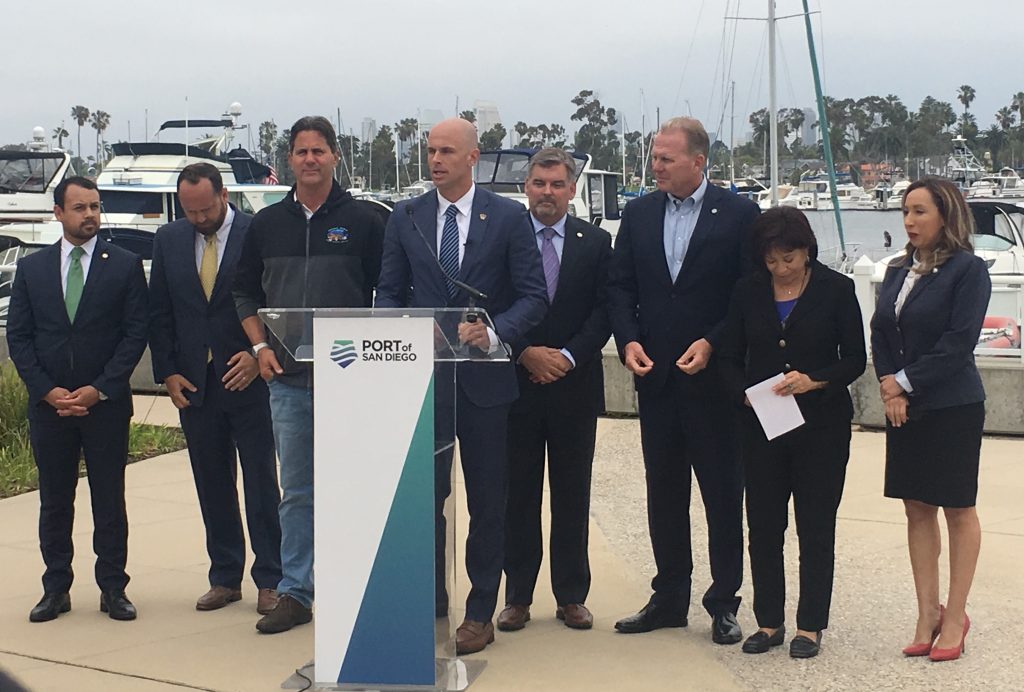On June 5, 2019, the City of Coronado hosted the second major Tijuana River Transboundary Sewage Stakeholder meeting at the Coronado Community Center. Representatives from the regional EPA (Environmental Protection Agency), International Boundary and Water Commission, North American Development Bank, and Customs and Border Protection gave presentations and answered questions at the standing room only gathering. Also in attendance were representatives from offices of Senators Feinstein and Harris, members of Congress Scott Peters, and Susan Davis, and offices of California State Senators Ben Hueso and Toni Atkins, and Assemblymember Todd Gloria. Naval Base Coronado was represented by Water Programs Manager John Locke.
Coronado’s Mayor Richard Bailey was joined by San Diego Mayor Kevin Faulkner, Imperial Beach Mayor Serge Dedina, and Chula Vista Mayor Mary Salas. Mayor Bailey opened the program with a welcoming address in which he thanked all in attendance, especially the EPA, IBWC, CBP, representatives from Congress and all those who traveled here, some from as far away as Washington D.C. He also thanked members of the public from Coronado and neighboring cities.
Mayor Bailey stated, “The city of Coronado is convinced everyone in this room has a role to play, and through collaborative efforts this is the team that is going to solve this issue once and for all.” Bailey went on to say, “this is the biggest environmental issue our region faces and the most important one to be solved. Over the past few years we all have made tremendous progress in calling awareness to the TRV pollution situation. Through these collaborative efforts Congress has stepped up and important funding to projects devoted to the clean up of the Tijuana River Valley has been allocated.”
The Environmental Protection Agency
In his introduction, Bailey gave special thanks to EPA Administrator Michael Stoker of the Region Nine Division of the Environmental Protection Agency. Stoker was appointed just over a year ago to San Francisco headquartered EPA Region Nine, which is comprised of Arizona, California, Hawaii, Nevada, the Pacific Islands and 148 Tribal Nations. This is important to realize when understanding how far his office has to stretch their budget; funds allocated by Congress. The EPA cannot lobby or make direct requests to Congress for funding dollars.
Since being appointed, Stoker has held six border meetings in San Diego to learn more about, and how best to address, the TRV pollution situation. Stoker stated, “I and my staff are 100% in to do anything and everything we can, with the resources we are given, to address this problem in San Diego.” He went on to say, “I really do believe on our mutual watches, we will solve this problem.” The assembled stakeholders had received a list of the projects it would take to resolve the toxic border water problem, which extends from waters flowing out of Mexico into the Gulf of Mexico, the Rio Grande, San Diego to the Pacific Ocean. Stoker shared that he has committed one half of his total $15 million allotted border infrastructure funds to the San Diego sector.
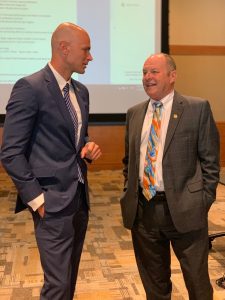
Stoker then specifically thanked the representatives from Senate offices of Feinstein and Harris as well as House members. It is the appropriations from these members and their committees that will enable the EPA and other federal agencies to pay for fixing the transboundary toxic water issue. Stoker stated that the EPA is ethically constrained from lobbying for funds directly. He can only direct resources Congress allocates. Inferred, but not stated, is that the task the stakeholders and the public have is to contact our representatives in congress stressing the urgency for increased funding.
The International Boundary and Water Commission
Stoker then called special attention to the presence of August 2018 IBWC appointee, Commissioner Jayne Harkins. Stoker pointed out that, “She is engaged and within two weeks of coming on the job, Commissioner Harkins met with the San Diego stakeholders.” Stoker said, “This is a complete turnaround from the concern the IBWC had shown prior to Jayne Harkins appointment.” Harkins is the first woman to be named Commissioner in the IBWC’s 129 year history. Harkins has said, “My priority is border sanitation. I think a lot of what IBWC can do in both the United States and Mexico is bring stakeholders together into binational meetings to talk about the data we have, what we are lacking and then try to resolve issues.”
Harkins’ address continued, “While border sanitation is my priority, I have 2,000 miles of border sanitation issues. I am committed to working with you all and figuring this thing out. However, I have to tell you that I am currently hampered in telling you about ideas I would like to bring forward, ideas I can’t talk about today due to pending litigation. I saw a lot of attorneys here representing folks litigating against us (IBWC). I did not bring my attorney with me today; probably should have.”
Harkins explained that in her IBWC career she has worked on very complex issues, with numerous entities at federal and local levels; including some with binational components. “So, I have ideas on resources, how to use things as resources, and we may have to pull in more players to help us get there. But again, I am limited in what I can discuss and saying what I can do because of litigation. I apologize for that. But that is the way life is at the moment. Hopefully, we will get to that point where can sit down and have truly technical discussions and come up with ideas.”
From her extensive experience, Harkins explained, “every one of us will have to help fund – and I know no one likes to do the O & M [operations and maintenance] component. Everybody likes to throw in money for the capital project. It is the O & M component we need to fix and to figure out how these O & M dollars will always be available to us. I am not saying the IBWC is going to take on that responsibility; I am saying it is up to us, the global us to be sure we have the steady stream of funds to do the O & M. If we don’t, we will be back here again.” In closing, Harkins said, I am here with you; to do the work through this process and get this problem solved.
The North American Development Bank
Many federal agencies are involved in getting projects like the TRV polluted water flow crisis funded and eventually resolved. The North American Development Bank (NADB) provides financing to support development and implementation of environmental infrastructure projects to help preserve and protect the well-being of residents in the United States and Mexico border region. The Border Environmental Infrastructure Fund (BEIF) for project implementation is a grant program funded by the U.S. Congress through the EPA, and administered by the NADB.
At the June 5th Stakeholder meeting, EPA Environmental Engineer Doug Liden gave a lengthy presentation of the recently completed EPA/NADB Infrastructure Investment and Tijuana River Diversion Study. Liden’s update stated that while San Diego’s beach closures are more closely related to rain events than to diversion system failures, the study identified six prioritized investment options to effectively mitigate dry-weather transboundary flows from crossing into the U.S. Three of these are located in the U.S. and three are in Mexico. These six fixes alone will range in cost from $8 million to $108 million. The NADB and EPA stated that distribution of the study’s executive summary will be finalized and made available in coming weeks.
Current TRV Progress
On June 6, 2019, the NADB and Tijuana’s local water utility, CESPT, signed a $2.42 million grant agreement for continued rehabilitation on the collector main located in the northwestern section of Tijuana. This will help reduce transboundary wastewater flows polluting San Diego. Leveraging funding from the BEIF secured important financial contributions from Mexico and its State Water Utility to complete the funding required to implement the project. Replacing this deteriorated section of infrastructure, which has been prone to failure and leaks, is significant progress.
In addition, the U.S. EPA, NADB, and Mexico’s Comisión Estatal de Servicios Públicos de Tijuana (CESPT) recently concluded the first project financed to prevent wastewater spills at a section of “Colector Poniente.” This project consisted of replacing almost 15,000 feet of deteriorated pipeline that runs parallel to the Tijuana River for about 10 miles. $1.5 million of the $3.4 million cost was supported by BEIF. Completing this project will prevent approximately 4 million gallons per day (mgd) of untreated wastewater discharge.
U.S. Customs and Border Protection
The polluted, toxic transboundary water flows in the TRV have seriously affected the health and well being of our U.S. Customs and Border Protection officers. USCBP representatives presented a Cross Border Master Action Plan. Also presented were findings of a six month study, which included water, soil and sediment samplings. On-call sampling events occurred from October 2018 through February 2019, in ten sampling locations. The toxic pollution findings and levels of same were horrific. As EPA Administrator Michael Stokes stated, and IBWC Commissioner Jayne Harkins echoed, “these brave men and women of the CBP did not sign up to work in a toxic waste environment.”
The Overview Sampling Effort produced:
- Baseline characterization of soil/sediment conditions during dry weather
- Ongoing aqueous discharge and sediment characterization associated with either spontaneous illicit discharge releases or wet weather flows from Mexico that cross the U.S. international border.
Illicit, nighttime rogue toxic waste dumping is an increasingly dangerous addition to what is endangering the lives of our CBP officers as well as residents on both sides of the U.S. Mexico border. Chemical constituents found and analyzed are phosphorus, arsenic, cobalt and manganese. Constituents also found in the majority of aqueous samples include aluminum, antimony, iron, thallium, uranium and vanadium. Biological data indicated that Enterococcus and coliform bacteria exceeded screening levels in almost all screening samples.
Preliminary Needs and Opportunities Assessment
The County of San Diego presented their SB507 Needs and Opportunities Assessment (NOA). Below is a chart identifying a preliminary list of 26 potential projects.
Massive funding is needed for the implementation of everything from installing Tijuana River Trash Booms (est. initial cost of $5 million with $2.5 million needed for annual maintenance) to a new Storm Water Treatment Facility with implementation estimated to cost $80 million and annual maintenance of approximately $3 million. These figures are, of course, in 2019 dollars. Some fixes will necessitate matching funds from Mexico. A huge task of new cross border cooperation is required. The U.S. Congress must sign on for long term funding, as must the Mexican federal and local governments.
Concluding Press Conference
At the post EPA TRV Stakeholder Meeting press conference, concluding comments were made by Mayor Kevin Faulkner of San Diego, Mayor Serge Dedina of Imperial Beach, Mayor Mary Salas of Chula Vista and Dan Malcom of the Port of San Diego, and Mayor Richard Bailey of Coronado. The consensus of the Port of San Diego and all mayors is that close collaboration and cooperation between all federal and local stakeholders is the key to resolving the decades long TRV transborder toxic wastewater spills.
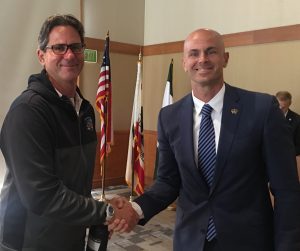
Various efforts are being pursued by several parties, however the principal participants agreed that a multi-faceted approach is important and vital to cleaning up the TRV. There is no one answer and everyone’s efforts and collaboration between all entities is important to solve the issue.




